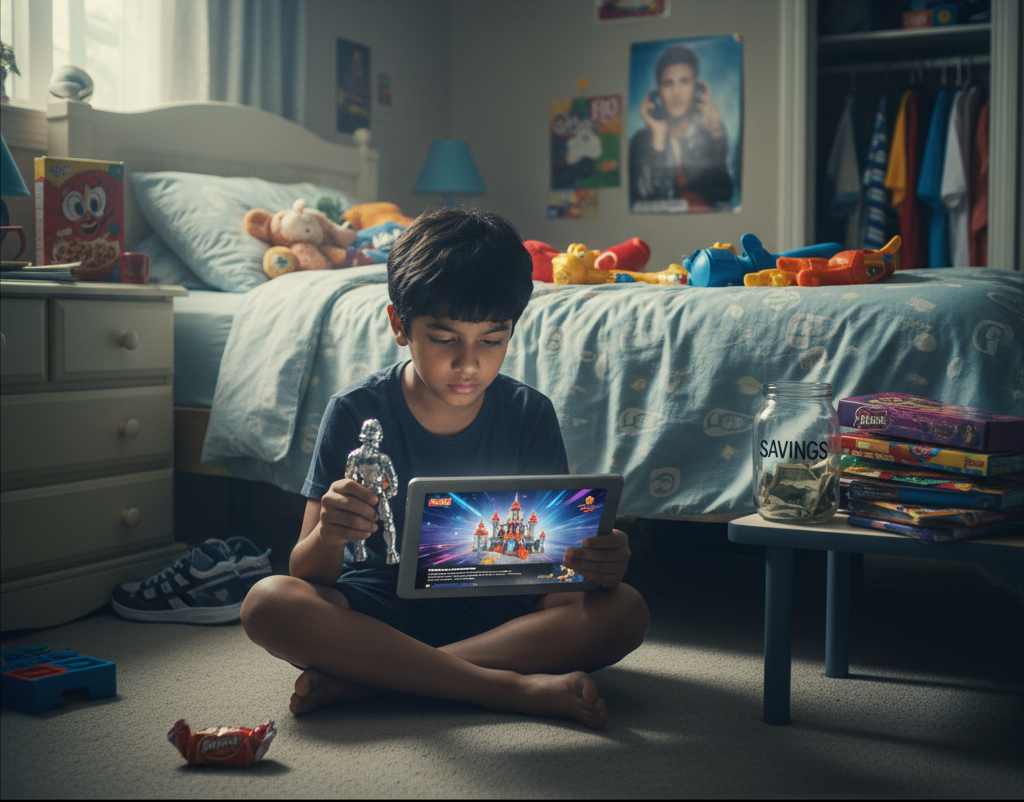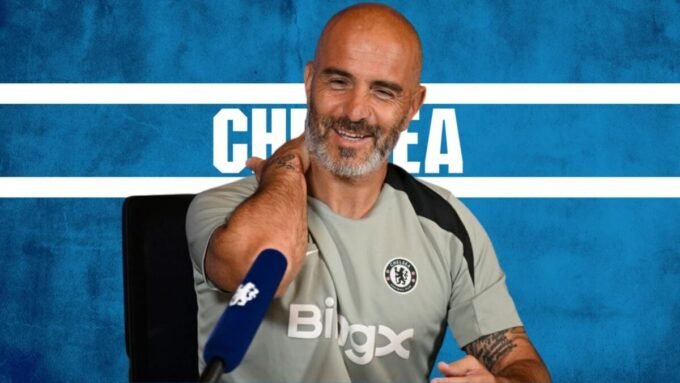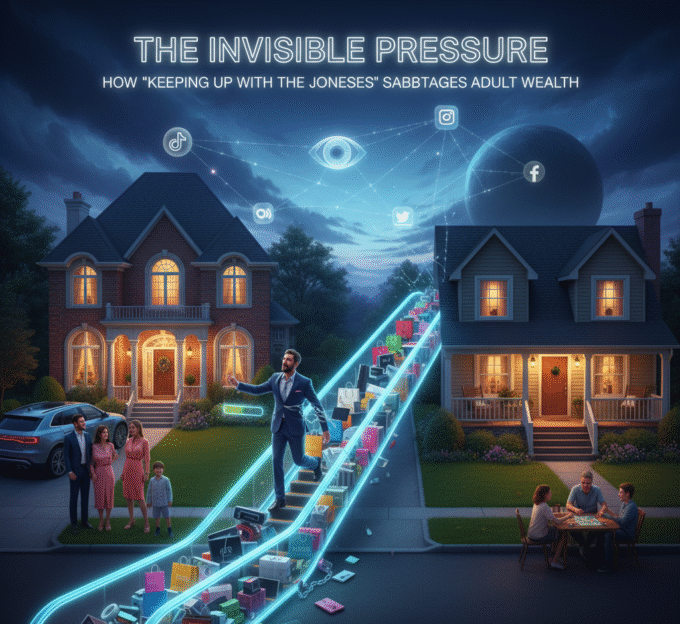That first piece focused on the immediate impact—the pure, uncritical “buy me” power ads have on young kids. And that’s a huge part of the problem, certainly. But what if we zoom out a bit? What happens when those little, insistent voices—the ones chanting slogans for sugary cereal and must-have action figures—grow up? The subtle conditioning of childhood advertising doesn’t just disappear when a child turns eighteen. In fact, I think the long-term influence on their financial behavior as adults is the truly significant, and honestly, perhaps the scariest legacy of early-life consumerism. It’s the silent foundation of poor adult money habits.
You see, advertising is basically teaching a child a language, a way of interpreting the world. And that language, which is spoken fluently by marketers, often substitutes material acquisition for genuine emotional fulfillment.
The Materialism Virus: A Lifelong Condition?
We touched on materialism before, but let’s really think about its adult manifestation. When kids are consistently exposed to the message that “happiness equals things”—when every commercial shows a problem instantly solved by a product—they internalize this belief structure. It becomes a core value, an almost automatic response to feeling inadequate or stressed. If they feel lonely, the answer is a new gadget. If they feel bored, the solution is a shopping trip.
Also read: The Hidden Curriculum: What Ads Are Really Teaching Our Kids About Money
The problem is, this learned behavior doesn’t change when they get their first paycheck. Now, instead of nagging a parent for a $20 toy, the adult is on their own, staring at a $1,000 phone upgrade or a new car payment. The emotional impulse is the same: I see a hole in my life, and this advertised product is the only thing that can fill it.
Research, actually, seems to back this up. Studies have shown a strong link between childhood exposure to advertising and higher levels of materialism in adulthood. More tellingly, that adult materialism is frequently associated with lower overall life satisfaction, higher rates of debt, and an increased tendency toward compulsive buying. It’s this vicious, self-perpetuating cycle: the more materialistic you are, the more you spend, and the less happy you tend to be after the purchase is made. The temporary “dopamine hit” of buying wears off, leaving a sense of “letdown,” and then the whole process starts over, looking for the next thing to buy. It’s almost tragic, really. We’re conditioning a generation for perpetual, unsustainable seeking.
The Erosion of Value and the Urgency Trap
Another crucial long-term effect is how advertising completely warps a person’s understanding of value. Early ads teach speed and immediacy. They scream “Limited Time!” “Buy It Now!” and “While Supplies Last!” This urgency, this need for instant gratification, doesn’t make for thoughtful financial planning.
In the adult world, that urgency translates into things like:
- Impulsive Debt: Whipping out the credit card for something that absolutely, positively must be had right away, without waiting or saving.
- Ignoring Quality for Brand: Paying a massive premium for a name-brand item, even if a generic or less-advertised alternative is of equal or better quality, simply because the brain recognizes the logo and associates it with the feeling of “cool” learned in childhood. That early-instilled brand loyalty is a powerful financial drain.
- No Concept of Trade-Offs: Financial health is all about trade-offs, right? If I buy this, I can’t buy that. But if a child is trained by advertising to believe they deserve all the things right now, they grow up struggling to embrace the necessary concept of budgeting—which is essentially saying ‘no’ to today’s impulse buy for a better tomorrow.
It creates a financial life built on wants constantly masquerading as needs, which, I think, is a perfect recipe for eventual financial stress and perhaps serious debt issues down the line.
The Digital Dangers: Advertising that Follows You
The modern advertising landscape, particularly the digital one, adds another layer of complication to this long-term conditioning. It’s a lot more than just static TV ads now. We have targeted advertising and sophisticated data collection.
Think about a teenager using a social media platform. The ads they see are not random; they are personalized based on their likes, their searches, and what their friends are buying. The system isn’t just selling a product; it’s selling an identity—an aesthetic, a subculture, a way of life that they feel they must purchase to belong to.
This creates an environment where the child, and later the young adult, is constantly being financially pressured to perform an identity. They feel they need to buy the $300 gaming chair, the specific limited-edition sneakers, or the branded coffee maker to be the person they see reflected in their highly-curated social media feeds. This pressure is relentless, and it’s a huge shift from the mass-market ads of old. The message is now: “This is what you specifically are missing.” It’s a powerful, almost inescapable tool for driving consumer behavior.
It’s almost as if the digital world has refined the conditioning to make it even more efficient, more subtle, and much harder to teach kids how to resist. The line between content and sales pitch is not just blurred; it’s practically invisible, especially with influencer culture.
Counter-Conditioning: Practical Strategies for Parents
So, if advertising is a powerful form of financial conditioning, we need to apply some strategic counter-conditioning. It’s not just about saying no; it’s about replacing the materialist response with a healthier, more critical thought pattern.
Also read: Best Tips to Grow Your Money with a Savings Account
1. The Power of the Pause (The 30-Day Rule)
This is a simple one, but deeply effective against impulse buying. For any non-essential item over a certain price (say, $15 or $20, depending on the family), you implement a mandatory 30-day waiting period. The item goes on a list—a physical one, perhaps with a picture.
- The Lesson: This directly attacks the advertising-fueled need for immediacy. If the child still desperately wants it after 30 days, they can buy it (with their own money, ideally). More often than not, the fever breaks, and the desire fades. They learn that most advertising-induced ‘needs’ are fleeting feelings, not actual necessities.
2. The Deconstruction Game (Media Literacy)
Don’t just mute the ads; watch them critically. Make a game out of deconstructing them together, almost like a forensic examination.
| Age Group | Focus Question | Goal/Lesson |
| Ages 5-8 | “What is the commercial trying to make you feel?” (Happy, excited, cool?) | The goal is emotional manipulation. Ads sell feelings, not just products. |
| Ages 9-12 | “Who is getting paid to say this is great? Why are they using this cool music?” | The goal is understanding persuasive intent and bias. Everything is a paid performance. |
| Ages 13+ | “What is the real cost? What did the company not show you about this product?” | The goal is to encourage skepticism about value, quality, and hidden costs (e.g., in-app purchases, environmental impact). |
3. Emphasize Experiences Over Stuff
This one is less about money and more about values. Materialistic habits take root when a child’s deepest desires—for connection, attention, and fun—are routed through things.
Make a conscious effort to prioritize non-commercial activities. Board game night, a hike, cooking together, volunteering, or simply having a long, unstructured conversation. When you plan a family vacation, perhaps frame it as: “We are saving the money we could have spent on five new video games to buy this experience instead.” This clearly defines money as a tool for creating memories and opportunities, not just for acquiring possessions. It provides a counter-narrative to the one ads push.
Also read: The Unconventional Playbook: Reinventing Your Real Estate Business in the U.S. Market
Honestly, the biggest battle against consumerism is fought not in the mall, but in the daily conversations we have with our kids. It’s about letting them see us make thoughtful, non-impulsive decisions, talking aloud about our own wants vs. needs, and admitting, sometimes, that we got suckered into buying something we didn’t really need. We aren’t perfect, and letting them see that real human thought process—the doubt, the budgeting, the eventual satisfaction of a careful purchase—is the best antidote to the glossy, perfect, and ultimately empty promises of advertising.















Leave a comment